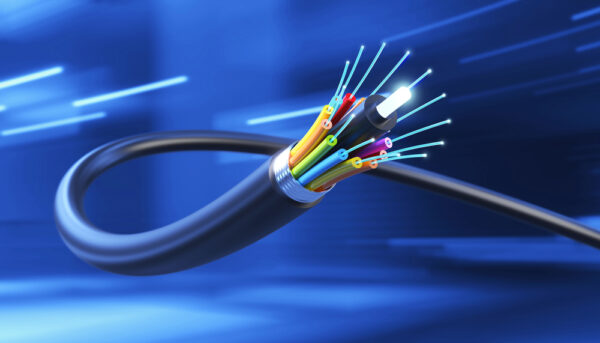
Data centers are the backbone of modern enterprises, powering a vast array of applications and services. At the heart of these data centers lies an intricate and often overlooked component: cabling. Cables connect every device, server, and system within the facility to ensure seamless data flow. As demands for higher data speeds, reliability, and scalability continue to surge, a multilevel cabling approach is needed to help high-performing data centers meet the expectations of their clients.
Data center cabling standards
Understanding the best practices and standards governing data center infrastructure is essential. Some of the most-recognized cabling standards include:
- TIA/EIA-568: This standard provides guidelines for the design and installation of twisted-pair copper cabling systems, including Cat 5e, Cat 6, Cat 6a, and Cat 7 cables. It defines pinouts, cable categories, and maximum cable lengths, ensuring interoperability and performance consistency across network devices.
- ISO/IEC 11801: An international cabling standard, ISO/IEC 11801 encompasses various media types, including twisted-pair copper, multimode, and single-mode fiber-optic cables. It specifies the requirements for performance, connectors, and installation practices for data transmission over extended distances.
- ANSI/BICSI-002: Offering guidelines for the planning, design, and implementation of data center telecommunications infrastructure, including cabling systems, ANSI/BICSI-002 helps create a structured and organized cabling environment. It focuses on the requirements for pathways, spaces, bonding, and grounding.
Besides these high-level frameworks for cabling best practices, several general guidelines also come into play regarding power and data cabling separation. Insulating cabling from electrical interference is paramount for not only performance but also safety and code compliance.

Quality cabling infrastructure
Data center administrators must decide which type of cabling to use and how to utilize it for expedient data transmission. Considerations include:
- Fiber-optic cables: Fiber-optic cabling offers the lowest latency of any modern cabling option. Single-mode fibers are ideal for long-distance transmission, while multimode fibers are suitable for shorter distances. These cables must be handled with care to preserve their integrity.
- Copper cables: Twisted-pair cables — such as Cat 5e, Cat 6, and Cat 6a — are widely used in modern networking. Within these options, shielded and unshielded cables serve different purposes throughout the data center. Be sure to avoid signal degradation and signal crosstalk when installing these cables.
- Patch panels and patch cords: Patch panels provide a central location for connecting various devices within a data center’s infrastructure. Using patch panels can simplify maintenance, troubleshooting, and upgrades.
- Connectors and termination techniques: Connectors like LC, SC, and RJ-45 are essential for terminating fiber and copper cables. A poorly terminated cable can lead to data loss and network instability, making terminators key components of routing and endpoint infrastructure.
Selecting proper cabling will depend on the intended purpose of the data center’s infrastructure. Pairing the right cabling with the appropriate use case — along with adhering to best practices — results in data infrastructure functioning as expected.

Understanding cabling architecture
After best practices have been considered and the optimal cabling selected, installation is the next step. This includes developing a comprehensive plan and identifying the right approach based on the required architecture, such as:
- Top-of-rack (ToR) cabling: ToR cabling architecture involves running cables from each server or network device to a central rack. It facilitates simplified equipment installation and management while supporting high-density deployments in data centers.
- End-of-row (EoR) cabling: EoR cabling architecture aggregates connections from multiple ToR racks to a centralized patch panel or switch, optimizing cable management and reducing cable lengths for improved network efficiency.
- Middle-of-row (MoR) cabling: Suitable for medium-sized data centers, MoR cabling architecture locates network switches or patch panels midway between racks. It provides a balance between cable management and reduced cable lengths.
- Centralized cabling: This cabling architecture consolidates all networking and communication cables into a central point. It typically is used in smaller office environments, enabling easy maintenance and scalability with structured cabling systems.
Regardless of the installation approach, cable management and labeling are imperative. Cabling should have well-defined routing and pathways to allow for inspection and maintenance without disruption. Shielding practices should also be considered where appropriate. Labeling cables at major junctions and both origination and endpoints can help reduce confusion and potential errors down the line.
Bringing order and hierarchy to data center cabling
Data center cabling is more than a maze of wires — it’s the lifeblood of modern information technology. By adhering to established standards, data center administrators can ensure compatibility, efficiency, and reliability in their cabling infrastructure. As data centers continue to evolve, embracing these cabling standards and best practices will not only optimize operations but also enable seamless expansion and innovation in the dynamic landscape of data management.

Recent Comments